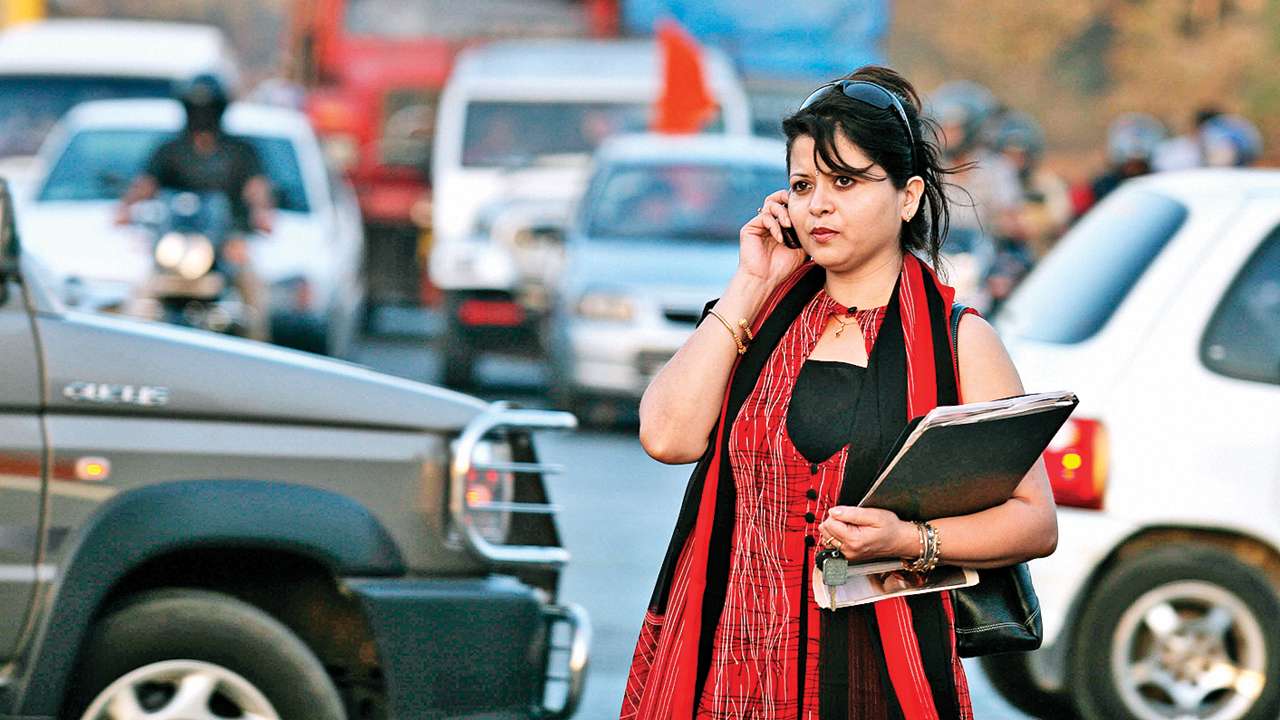
The Indian Census of 2011 was the first time mobility data was recorded by an official survey. It gave us insight into how Indian men and women travel to work. According to the Census, among the working women in urban India who travel to work, 45 per cent of them go on foot to their workplaces, while only 27 per cent of men walk to their jobs. The other big difference is in public transport. While 22 per cent of women undertake the journey to work by bus, the corresponding figure for men is only 14 per cent. Men are far higher users of motorized means like cars and bikes. Studies show that in developing countries men are the first to appropriate any mode of transport in the house- including bicycles and bullock carts. Research on mobility points out repeatedly that not getting access to personal vehicles, is the reason women are such enthusiastic users of public transport and walking.
However, with growing overall prosperity in urban India and women’s increasing assertion of their identity, women are finding ways to be mobile and access places in the city independently. Wherever the government has failed to provide public transport or the reassurance of secure travel to women passengers, or if the men of the house have staked primary claimed on the vehicles in the house, women have responded creatively to work around these barriers. Two vehicles have played a stellar role in this transformation- the gearless two-wheeler and the humble auto rickshaw.
The confidence with which women in smaller towns negotiate the city is astonishing and heartening. In 2015, women formed 33 per cent of all two-wheeler riders, bikes and scooters combined. The gearless Scooty introduced by TVS Motors in the mid-nineties was initially targeted at men but seeing the alacrity with which women took to the vehicle, the company changed its strategy and targeted middle-class young women, even setting up 80 centres to teach women how to ride a two-wheeler. In the summer of 2016, when Honda introduced its bike-scooter blend called Navi in Gujarat, 25 per cent of the buyers were women, because, marketers found, it gave them the thrill of riding a motorbike. While men continue to be the primary users of the household car, a gearless two-wheeler in vibrant turquoise or canary yellow is parked outside to take the lady to work or for household-related trips.
“You must buy a Scooty, your whole life will change,” Padma, 34, a physiotherapist in Trichy urged me when I was talking to women there about their daily trips. Her husband takes the car to work and she does a dozen trips in the neighbourhood during the day on her two-wheeler, accomplishing various home and childcare related tasks.
In Jalandhar, a town with no intra-city buses, sales of scooters to women have been zooming every year. An RJ cum newsreader I met zips from one studio to the next right up to the hour of the late-night news. In between, she rushes home to help with domestic chores and is far more mobile than her husband, thanks to her own private transport. Another government school teacher takes her vehicle up to the highway, parks it somewhere safe and boards an intercity bus to reach the school in a rural area, 30 kilometres out of Jalandhar.
The auto rickshaw, often derided for its unruly drivers and lack of traffic sense, seems to have done one thing right- it has incredibly enhanced women’s mobility.
In many towns, especially in the south, Indian women have handled the safety aspect of travelling in an auto rickshaw with a driver who might overcharge or misbehave by creating a familiar entity called the “known auto driver.” They find a trustworthy auto that plys in the neighbourhood, exchange mobile numbers with the driver and call him when they need to go somewhere, often tweaking their schedules to match his availability. This way everyone wins- the family isn’t fretting about her safety; the woman feels confident to go where she wants to and the driver gets some assured rides. This smart solution has in fact ensured mobility for some women, who otherwise would not have ventured out into the city, owing to their own diffidence or sanctions imposed by their families (read: husbands).
A couple of years ago, a Bollywood song called Chittiyan Kalaiyan Ve entered the annals of ladies sangeet history. “Buy me golden earrings, buy me colourful bangles, take me shopping, take me to a movie! I am requesting you!” pleads the girl, presumably to her boyfriend.
Who is this girl, I used to wonder. The actor in the video is portrayed as a modern urban woman. So, why is she not mobile to go on her own wherever she wants to? It is puzzling because in everyday life I see how ordinary women have worked around their constraints and proven that they have agency to find innovative ways to access the city. And thank God they did. Because as actor Priyanka Chopra, who has demonstrated stunning global mobility herself, said in an ad for a HeroMoto corp two-wheeler: Why should boys have all the fun?
The writer is the author of the book Urban Villager: Life in an Indian satellite town